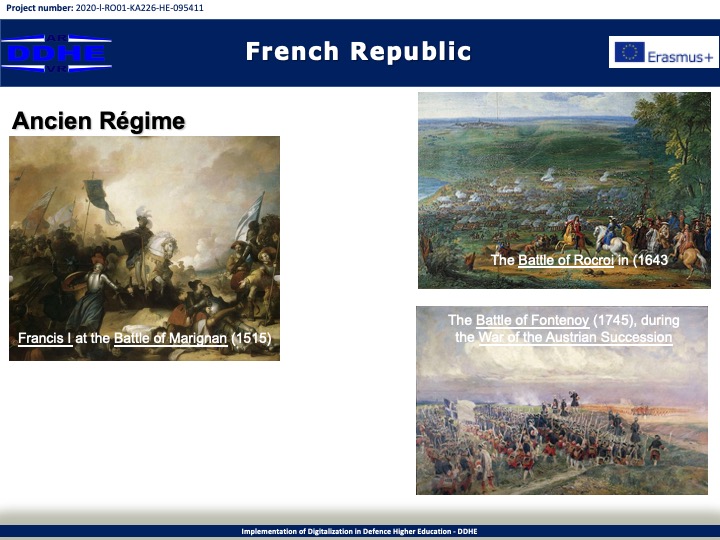
Ancien Régime
The French Renaissance and the beginning of the Ancien Régime, normally marked by the reign of Francis I, saw the nation become far more unified under the monarch. The power of the nobles was diminished as a national army was created. On the battlefield, the religious conflicts highlighted the influence of the gendarmes, heavy cavalry units that comprised the majority of cavalrymen attached to the main field armies. The pride of the royal cavalry, gendarme companies were often attached to the main royal army in hopes of inflicting a decisive defeat on Huguenot forces, although secondary detachments were also used for scouting and intercepting enemy troops.
After the Wars of Religion, France could do little to challenge the dominance of the Holy Roman Empire, although the empire itself faced several problems. From the east it was severely endangered by the Ottoman Empire, with which France formed an alliance. The vast Habsburg empire also proved impossible to manage effectively, and the crown was soon divided between the Spanish and Austrian holdings.
The long reign of Louis XIV saw a series of conflicts: the War of Devolution, the Franco-Dutch War, the War of the Reunions, the Nine Years War, and the War of the Spanish Succession. Few of these wars were either clear victories or definite defeats, but French borders expanded steadily anyway.
Wars in this era consisted mostly of sieges and movements that were rarely decisive, prompting the French military engineer Vauban to design an intricate network of fortifications for the defense of France. The armies of Louis XIV were some of the most impressive in French history, their quality reflecting militaristic as well political developments.
Treść jest rozpowszechniana na licencji Pewne Prawa Zastrzeżone Uznanie Autorstwa Na Tych Samych Warunkach 4.0